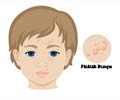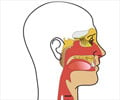Researchers at Weizmann Institute have uncovered the mechanism behind how viral infections spread.
The researchers say that they have found fresh insights into certain mechanisms by which the world's largest virus, mimivirus, invades amoeba cells.Reporting their findings in the online journal PLoS Biology, the researchers said that living cells become infected by viruses in two steps: first, the virus penetrates the cell; and second, the cell starts producing new viruses that spread and infect additional cells.
The researchers claimed that they had also obtained the first three-dimensional pictures of how the virus infects cells.
The process begins when the cell makes the outer wall of the virus, which is a container of sorts composed of proteins and known as the capsid.
The cell then makes copies of viral DNA and inserts it into the capsid, and as a consequence, a new virus is formed to leave the host cell and infect more cells.
During the course of study, electron microscope images of the mimivirus invading an amoeba cell showed that just after invasion, the walls of the protein capsid-a polygon composed of 20 triangles-separate from one another, and open up like flower petals to create a large, star-shaped entry nicknamed the "stargate".
Advertisement
According to the researchers, the pressure released with the sudden opening of the walls pushes the viral DNA into the channel, whose large dimensions allow the genetic material to pass quickly into the amoeba cell.
Advertisement
The insertion must overcome the pressure inside the container, and is probably driven by an "engine" located within the wall that harbours the opening.
The Weizmann team believe that their study might provide valuable insights into the mechanisms of action of numerous other viruses, including those that cause human diseases.
Source-ANI
RAS/L











